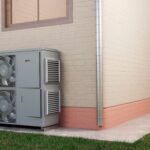
Essential Heat Pump Maintenance Tips for Year-Round Efficiency
A heat pump is one of the most efficient heating and cooling solutions available today. It works year-round to regulate your indoor temperature, making it a valuable asset to any home or commercial space. However, like any mechanical system, a heat pump needs proper care to operate at peak efficiency. Regular heat pump maintenance not only enhances performance but also extends equipment life and lowers energy costs. This article explores essential maintenance steps, signs of trouble, and professional servicing guidelines to help you keep your heat pump running smoothly.
Why Heat Pump Maintenance Matter
Heat pumps are designed to transfer heat instead of generating it, which makes them significantly more energy-efficient than traditional HVAC systems. But this efficiency can decline rapidly without proper upkeep. Dust, debris, clogged filters, and worn-out components can force the system to work harder, leading to higher electricity bills and premature damage.
Routine maintenance ensures:
- Improved energy efficiency
- Stable indoor comfort
- Lower operational costs
- Reduced likelihood of breakdowns
- Extended equipment lifespan
Key Heat Pump Maintenance Step
1. Clean or Replace Air Filters
Air filters trap dust and contaminants. When clogged, they restrict airflow and strain the system. How often? Every 1–3 months, depending on usage and indoor air quality. Clean filters improve airflow, enhance system performance, and maintain healthy indoor air.
2. Keep Outdoor Unit Clear
Your heat pump’s outdoor unit (condenser) must have proper airflow to function efficiently. Leaves, grass, snow, and dirt buildup can block airflow and reduce efficiency. What to do:
- Maintain at least two feet of clearance around the unit.
- Remove debris regularly.
- Gently wash the exterior coils with a hose if dirt accumulates.
Avoid using pressure washers, as they can damage delicate fins and components.
3. Inspect and Clean Coils
Both indoor and outdoor coils absorb and release heat. Dirty coils reduce the heat transfer process, causing the system to work harder. Cleaning coils annually helps boost efficiency and reduce energy consumption.
4. Check and Clear Condensate Drain
Heat pumps generate condensation. A blocked drain can cause water damage, mold growth, or system malfunction. Inspect the drain line for clogs and clean it using a wet/dry vacuum or a mild vinegar solution.
5. Monitor Thermostat Settings
Ensure your thermostat is functioning properly and set to the correct mode—especially during seasonal transitions. A malfunctioning thermostat can cause frequent cycling, uneven temperatures, or wasted energy.
6. Inspect Refrigerant Levels
Low refrigerant reduces the heat pump’s ability to absorb and transfer heat. This issue often indicates a leak and should be handled by a licensed technician. Signs of low refrigerant include:
- Reduced heating or cooling output
- Ice buildup on coils
- Hissing sounds near refrigerant lines
Never attempt DIY refrigerant handling—it’s dangerous and requires certification.
Signs Your Heat Pump Needs Professional Attention
Even with regular homeowner maintenance, professional servicing is essential. Watch for these warning signs:
- Unusual noises (grinding, clicking, buzzing)
- Short cycling—system turns on and off too frequently
- High energy bills despite normal usage
- Uneven heating or cooling
- Weak airflow from vents
- Ice buildup on outdoor unit
Addressing issues early prevents minor problems from becoming costly repairs.
Professional Heat Pump Maintenance Checklist
A licensed HVAC technician will perform tasks beyond typical homeowner maintenance, such as:
- Checking refrigerant charge and pressure
- Testing electrical connections and tightening loose wiring
- Lubricating moving parts
- Inspecting blower wheels and fans
- Verifying compressor performance
- Testing defrost cycle
- Assessing ductwork leaks or restrictions
Most experts recommend professional maintenance at least once a year, ideally before heavy seasonal use—spring for cooling and fall for heating.
Tips to Maximize Heat Pump Efficiency Year-Round
- Use a programmable or smart thermostat
- Avoid frequent temperature adjustments
- Ensure your home is well insulated
- Keep vents and registers unobstructed
- Schedule annual professional servicing
Conclusion
Heat pump maintenance is essential for preserving energy efficiency, reducing operational costs, and ensuring reliable comfort throughout the year. Simple routine tasks—such as cleaning filters, clearing debris, and inspecting components—can significantly improve system performance. Combined with professional annual servicing, proper maintenance helps your heat pump operate smoothly and last longer. By investing a little time and attention, you can enjoy dependable heating and cooling while keeping energy bills under control.



